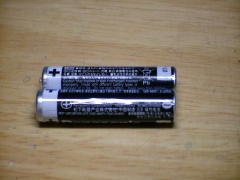Batteries and Accumulators
| Infobox on Batteries and Accumulators | |
|---|---|
| Example of Batteries and Accumulators |  |
| Facts | |
| Origin | Various |
| Stowage factor (in m3/t) | - |
| Humidity / moisture | - |
| Ventilation | - |
| Risk factors | See text |
Batteries and Accumulators
Contents
Description
Batteries or accumulators are products that can generate and store electricity. They are used as an energy source for a variety of products for example torches, weighing scales, watches, radio’s and mobile phones. Batteries can also be used for industrial purposes such as starter batteries for combustible engines ( boats and vehicle engines).
In principle a battery consist of two parts of different metal composition. These parts are called electrodes and are either positive or negative. The electrodes are submerged in a chemical solution ( electrolyte). Under the influence of a chemical reaction the electrodes gain positive or negative loads.
Batteries come in varying types and sizes. There are batteries than can be used multiple times and whereby the chemical process is reversible ( so called re-chargeable batteries); on the other hand there are also non rechargeable batteries that do not have this advantage.
Shipment / Storage
The carriage of batteries is subject to the provisions of the International Maritime Dangerous Goods (IMDG) code. Before shipping batteries, the appropriate sections of the IMDG code should be consulted.
In addition to the international (IMDG code) regulations, country specific regulations may be applicable Those country specific regulations should be consulted prior to shipment.
Batteries are primarily shipped in packed form, whereby the batteries are packed in a suitable surrounding package containing either a single battery or multiple batteries of the same size and type per package.
Transport mode often involves palletized units, which can be stowed in closed sea freight containers.
Cargo securing
The basics to stow and secure packed goods is to provide a tight and rigid stow.
Packages should be strong enough to withstand the forces acting on them during transport. Packages should not deform and measures such as reinforced corners, bottom and top members of packages should be facilitated within individual packages or pallet loads.
Any void spaces within a stow of packaged goods should be filled ( blocked off) by suitable material such as timber beams or air bags. In case of an isolated stow of packed goods, lashing and securing by means of web lashings or straps should be provided.
Risk factors
- Physical damage
- Moisture damage / corrosion
- Chemical reaction resulting in:
- heating
- explosion
- violent corrosion ( even to metals)
- health and environmental hazards











